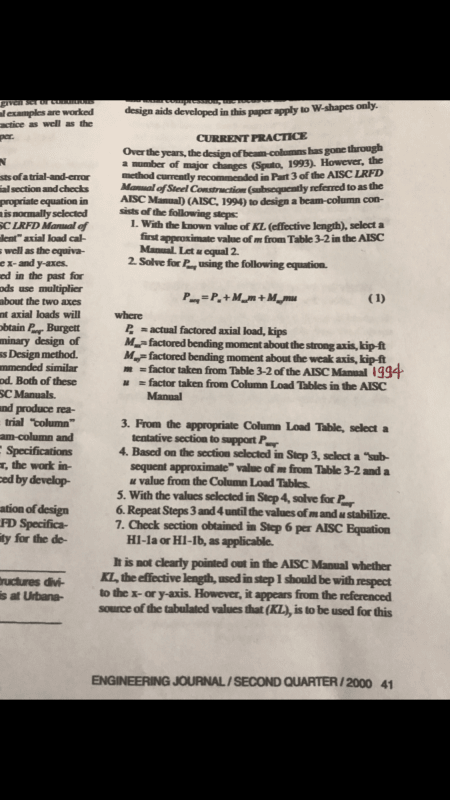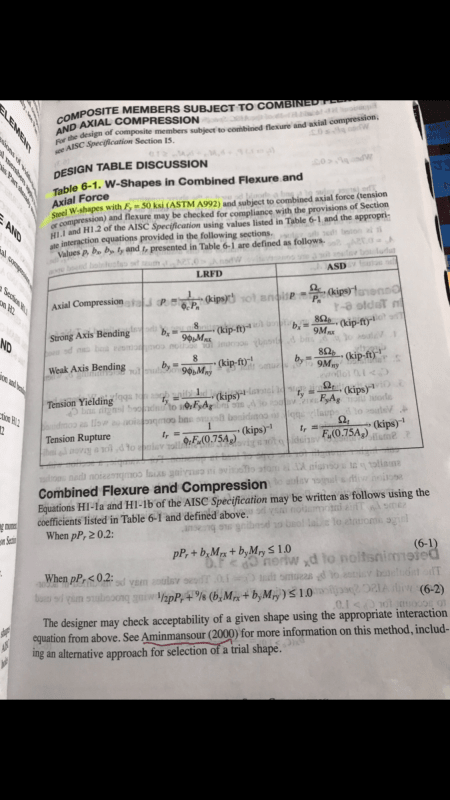I’ve been studying this topic and I know to use CH H formulas for combined forces of the AISC code it is pretty straight forward. However when a column size is unknown (in other words, designing for the lightest W shape for example) there are several procedures one can go about. I investigated the procedure presented by John K Snyder (aisc engineering journal report) but this method in that report is limited to W shapes with moments about strong axis only. Therefore I studied another method by Aminmansour (2000) which the AISC referred me to and the part I am having trouble finding is the m-factor and U-factor. Aminmansour himself provided tables with m and b factors but those aren’t the factors I am referring into. His factors are just labeled similarly and it’s for when using his method which has limitations as well so I am hesistant to use that method and I am not referring to those m and b factors. In the report, he also presents the regular AISC current method and explained it, which is the design method I am trying to use because it has less limitations. According to their samples and steps, they use a set of m-factor and u-factors (not to be consfused with the coefficients of part 6 current steel code)and it seems that they extrapolate it from Table 3-2 of the 1994 AISC manual, but this means it can also be calculated. Where are the m and U formulas at or when can I find them ? If anyone knows or is familiarized with what I am talking about. It seems that the m and u factors need to be calculated first in order to be able to convert your moments into “an equivalent axial loads” and then just add to the given axial load. Thereafter this summation result is looked up in the column capacity tables to pick a trial section which therefafter is easy just plug into the ch H equations. The hard part is calculating m and U however. I can’t find those formulas. Thank you
Tek-Tips is the largest IT community on the Internet today!
Members share and learn making Tek-Tips Forums the best source of peer-reviewed technical information on the Internet!
-
Congratulations cowski on being selected by the Eng-Tips community for having the most helpful posts in the forums last week. Way to Go!
Steel beam columns subject to flexure and compression
- Thread starter ENGR_2321
- Start date


